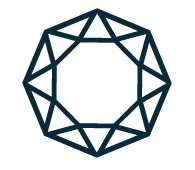Throughout the creation of this Machine I have utilized numerous online resources and have borrowed (in some cases - borrowed and modified) lots of open source knowledge, parts and code. Without the information that is available through websites like Thingiverse, github, Instructables, and the RepRap Wiki, the creation of my machine would have been imposible in the amount of time I've completed it.
So, in the spirit of the open source community - I encourage you to download these files and create your own "wall mounted cartesian light machine." (If you want to of course.) OR, make a derivative!
Here is a link to all of the .stl files that have been used in the creation of the "Wall Mounted Cartesian Light Machine." In that folder, you will also find a brief instruction sheet, detailing all of the other components of the machine. Enjoy!
So, in the spirit of the open source community - I encourage you to download these files and create your own "wall mounted cartesian light machine." (If you want to of course.) OR, make a derivative!
Here is a link to all of the .stl files that have been used in the creation of the "Wall Mounted Cartesian Light Machine." In that folder, you will also find a brief instruction sheet, detailing all of the other components of the machine. Enjoy!
























































